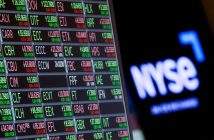Asian stock markets posted a mixed performance on Tuesday, May 21, 2025, as investors digested diverging economic signals across the region. Japan’s benchmark Nikkei 225 fell slightly, while Australia’s ASX 200 extended its rally after the Reserve Bank of Australia (RBA) signaled a dovish policy outlook.
Japan’s Nikkei Falls on Disappointing Trade Data
Japan’s Nikkei 225 index dipped by 0.18%, weighed down by weaker-than-expected trade data for April. The latest figures showed a decline in exports, particularly in machinery and auto parts, signaling that global demand for Japanese goods remains under pressure. Imports also slowed, reflecting subdued domestic consumption. The yen held relatively steady, though concerns linger over Japan’s growth prospects.
Analysts suggest that persistent weakness in external demand and tepid consumer spending could force the Bank of Japan to maintain its ultra-loose monetary policy for longer than expected, even as global peers move toward tightening or neutral stances.
Australia Extends Rally After RBA Rate Cut
In contrast, Australia’s S&P/ASX 200 index rose 0.5%, closing at 8,386.8 points, as markets continued to react positively to the RBA’s unexpected rate cut announced earlier this week. The central bank lowered its benchmark rate by 25 basis points, citing the need to support domestic demand amid cooling inflation and a slowing job market.
Investors interpreted the move as a strong signal that the RBA is prepared to act preemptively to protect growth, even as inflation continues to gradually moderate. Financial stocks and consumer sectors led the rally, with sentiment buoyed by the central bank’s supportive stance.
Broader Market Outlook
Elsewhere in Asia, Chinese and South Korean indices traded flat amid ongoing caution surrounding global interest rate trends and mixed corporate earnings. Market participants remain focused on key macroeconomic data due later this week, including U.S. FOMC minutes and global PMI readings, which could influence short-term risk appetite.




